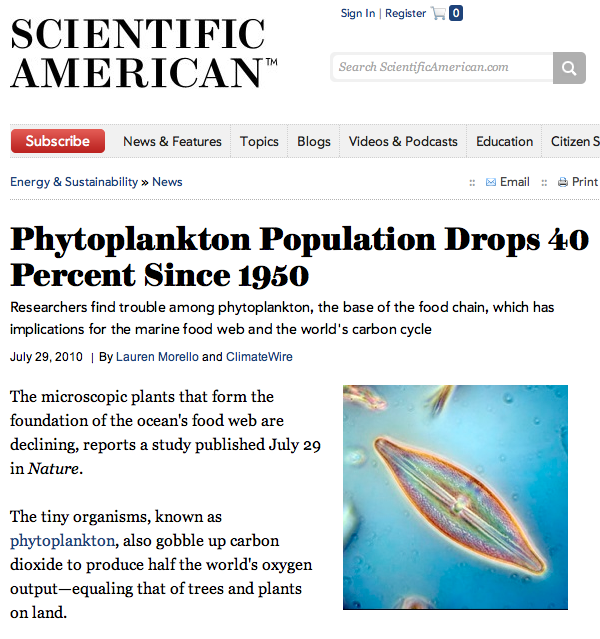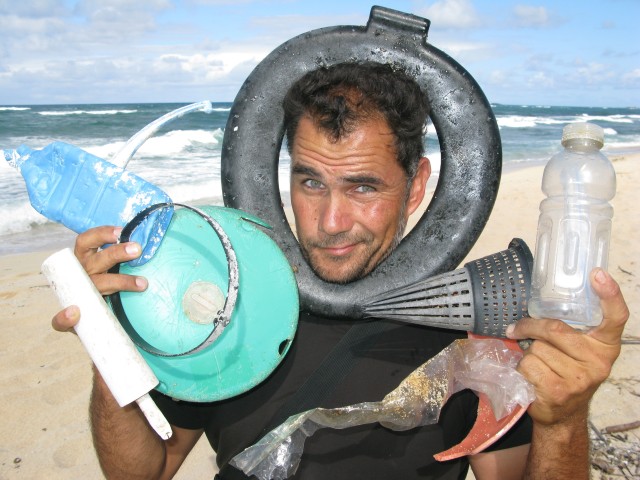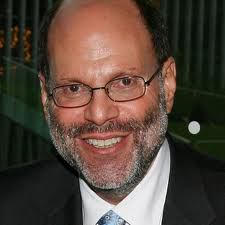#379) 2014: Speaking Across A Broad Spectrum
December 30th, 2014
It’s been a busy year of speaking and working with a wide range of organizations. The narrative/storymaking skills I’m teaching these days — developed in part in our Connection Storymaker Workshop over the past decade — are relevant to almost any profession — from Deloitte accountants to Monsanto Safety Officers (with the National Safety Council). I work with far more than scientists. And as a result, I see patterns across different demographics. Some audiences are blindly affirming, some are blindly negating, and some are right in the middle.
I SPEAK ACROSS A BROAD SPECTRUM OF ORGANIZATIONS. These are the 21 talks and workshops I did this year. Folks in the business community (and Hollywood) are more likely to be affirming and visceral, sometimes to an uncritical degree. At the other end of the spectrum, scientists tend to be heavily cerebral and can be blindly negating — dismissing ideas out of hand because there aren’t sufficient data or enough studies, regardless of how interesting the idea might be. Public health, in my experience, seems to hit the best balance.
INTRIGUING YEAR
I started this year by speaking to what I affectionately came to call, “The Wall of Blind Negation.” It was the audience for my opening keynote address in January at the annual meeting of the Society of Integrative and Comparative Biologists. It’s the main organization I was a member of when I left science. I had expected an enthusiastic crowd who would be eager to hear what I had learned in the two decades since I left science. And to their credit, the people who took part in my workshop really were into it. But my big talk ended up being almost like a Monty Python skit with a series of questions that were all negation. By the end I wanted to ask, “How can you be so certain that what I’ve presented to you here is so wrong?”
This pattern stands out for me because I speak across such a broad range of audiences these days. At the other end of the spectrum from scientists is the business community where accuracy and precision are not such a high priority. That means they can afford to be more affirming, less critical and negating. They tend to grab new ideas and run with them. You can feel the greater appreciation of innovation and novelty in the business community. You can also watch really bad ideas take off uncritically. Especially in Hollywood, where uncritical thinking is taken to the hilt.
In the middle of this spectrum is the public health world. I think because they have the word “public” in their job description they tend to be more practical minded when it comes to communication. They know that their work is of zero value if they fail to communicate it widely. As a result, I’ve found they are willing to pay without grouching, listen more closely, argue less, negate less, and generally have a greater understanding of the importance of communication.
In the end I have a hard time saying who is the best group to work with. I do appreciate the “acid test” that scientists are trained to subject ideas to. It can be frustrating and painful, but it does drive you to thinking deeper and harder. But on the other hand, when it gets to the point of a “wall of blind negation,” things can get rather ridiculously unproductive.
Here’s to next year being even more interesting, challenging and fun.
378) Q-Tip Drops an ABT on Twitter
December 22nd, 2014
Lest you thought the ABT structure was only for Abe Lincoln and Watson and Crick, rapper Q-Tip shows you how it underlies all effective argumentation as he lectures Iggy Azalea on Twitter.
RAPPER Q-TIP USES TWITTER TO DELIVER A SHORT TUTORIAL ON RAP MUSIC TO AUSTRALIAN FEMALE RAPPER IGGY AZALEA. It’s in the form of an ABT, though he needed a little more than a single tweet to get it out.
KEEPIN’ IT SHORT ON TWITTER (JUST 40 TWEETS!)
As I mentioned earlier this year, the co-creator of Twitter appeared on the Colbert Report and mentioned that they are working on a longer version of Twitter — realizing that maybe 140 characters isn’t enough to convey coherent narratives (Colbert had been the victim of a punch line taken out of context on Twitter).
In the meantime, our Connection Storymaker Workshops revealed that when using the ABT narrative template, groups converge consistently on an average of around 300 characters. This suggests Tweets are less than half as long as what’s needed to convey a simple narrative statement.
LAYIN’ DOWN THE ABT BEATS
In the recent Twitter flap between young female rappers Iggy Azalea and Azealia Banks over black culture, rapper and record producer Q-Tip offered up his perspective on their conflict by posting a mini-lecture via Twitter. He only needed … 40 Tweets to get it all out. Isn’t that saying something about the narrative limitations of the medium?
Here’s his mini-lecture. What’s great about it is, sure enough, he follows the ABT structure, plain and simple. Notice the first two paragraphs are his set up — a series of expository statements that could be linked with “and’s.” The third paragraph starts with “But!” right on schedule. Then I’ve added “THEREFORE” in parentheses at the start of the last paragraph — you can feel it could fit there if you wanted. The last paragraph is the statement of consequences.
In a single sentence, he basically says, “African Americans have endured a lot of hard times AND the struggle continues, BUT through art we have found a voice, especially through hiphop and rap which now everyone can related to, THEREFORE I encourage you to enjoy what we’ve created, but just be aware of where it came from.”
That pretty much captures what he had to say, but even this ABT took 282 characters — more than double what a tweet allows. Which says something needs to change.
“HipHop is a artistic and socio-political movement/culture that sprang from the disparate ghettos of NY in the early 70’s Coming off the heels of the CIVIL RIGHTS MOVEMENT and approaching the end of the Vietnam war it was a crossroads 4 America specially for blacks in the US our neighborhoods were PROLIFERATED w/a rush of HEROINE.”
“Our school systems here in NY dungeon traps with light for learning… blk men some of whom didn’t return from tours of duty n the ones who did came w/war baggage (agent orange, addiction, ect..)… these men had families but due to these events and throw into the mix the public emasculation… they proved to be handicapped parents. The surrogate parents? The STREETS… the streets of gangs, crimes, and the hustlers coddled us and swept us up.”
“But! Being a spirited, rhythmic & expressive people music art dance outlined our existence… it proved a way for us to exhault to scream to dance to laugh and find OUR VOICE… we weren’t at the time skilled musicians as kids. We had records, turntables, ideas and INGENUITY being natural chemist we took from whatever was availed to us and we created something mighty and special.”
“We cut breakbeats back n forth we took a hybrid of Jamaican toasting along w/ radio jock rap( hank Spann, Gary Byrd, ect.) and we put our rap down.. it was a neighborhood thing really. Black and Latino Kids were carving out their space and it became infectious… eventually Keith Cowboy coined the phrase hiphop . Yrs later the first rap record was recorded and now we r moving.”
“But during these strides this country still had the monster of racism and racial insensitivity breathing and ruling… believe it or not young black n Latino lives specifically weren’t acknowledged in mainstream American culture unless Of course.. the convo was abt gangs , being criminals or uneducated. And hey! Like I stated early our families were rushed our schools sucked and we were left to put devices to survive… but HIPHOP showed that we had DEPTH, fire, and BRILLANCE… the music was undeniable! It moved from NY N became national and even GLOBAL.”
Hiphop now was FOR EVERYBODY!! All of those who cld relate to the roots, the spirit, the history, the energy.. It reached YOU… it touched your spirit n took u up. We magnetized you! That’s what BRILLANCE does… now u are fulfilling your dreams … BUT! you have to take into account the HISTORY as you move underneath the banner of hiphop. As I said before… hiphop is fun it’s vile it’s dance it’s traditional it’s light hearted but 1 thing it can never detach itself from is being a SOCIO-Political movement.”
“U may ask why … Well once you are born black your existence I believe is joined with socio-political epitaph and philos based on the tangled and treacherous history SLAVERY alone this is the case it never leaves our conversation… Ever. WeAther in our universities our dinner tables our studios or jail cells… the effects still resononates with us. It hurts… We get emotional and angry and melancholy… did u know president Clinton was the ONLY PRESIDENT to apologize for it? did u know that remnants of slavery exist today thru white privilege? When certain “niceties” r extended your way because of how u look? Isn’t that crazy?”
(THEREFORE) “I say this 2 say u are a hiphop artist who has the right 2 express herself however she wishes… this is not a chastisement this is not admonishment at ALL this is just one artist reaching to another hoping to spark insight into the field you r in. I say this in the spirit of a hopeful healthy dialogue that maybe one day we can continue… I’ve been on twitter a long time and this will probably be my last series of tweets pretty much but I’m Kool with it as long as I got to share this w u. Zzzzzzz’s up! Peace!”
#377) Good Buoy: Marcus Eriksen Shows a Trillion Ways to Communicate Effectively for the Oceans
December 12th, 2014
It’s about the power of the singular narrative. It’s contrary to the mind of a scientist who wants to tell the world EVERYTHING. For the case of plastics in the world’s oceans, Marcus Erikson of 5 Gyres has given the media a single number — 5.25 trillion pieces of plastic now adrift at sea. Is that number accurate? It’s close enough — the equivalent of just saying there’s A LOT of plastic out there. But it’s a specific number, and that’s what the masses like. Which is why there’s now a minor tsunami of media attention in the NY Times, Washington Post, Nature World News and a trillion other media outlets.
HOLY CRAP, BATMAN! Marcus Eriksen frames himself amidst some of the 5.25 trillion pieces of plastic he is determined to rid the oceans of.
ONE ISSUE, ONE NUMBER
This is what the group 350.org did with the selection of their name. They decided to brand the entire climate issue with a single number, which was bold and wise. The payoff isn’t immediate — it’s a more long term investment, likely to be worth it only if the organization sticks around and receives a lot of media attention, as they have.
The real benefit is when there are discussions of atmospheric carbon dioxide levels — a snoozer of a topic — and suddenly there is a ring to one particular number — 350. Suddenly people find it a little bit easier to follow the discussion, and some of them hit that moment of realization of, “Oh, that’s why they named themselves that.” That is the eventual communications payoff, which can happen.
A TRILLION REASONS TO SIMPLIFY
In the case of plastics in the ocean, if you’re going to say there’s a lot of plastic out there, then please give us a number and make sure it’s an impressive one. That’s what Marcus Eriksen just did.
It has the right term associated with it — “trillion.” That’s great. You might add “give or take a few trillion,” but who cares. This is about conscientious communication — conforming your messaging to the constraints of the media world (the need for simplicity and singularity) yet being conscientious and knowledgeable enough to make sure your guesstimate is reasonable and responsible, as he’s done.
It’s what was done with terrorism in the Bush era by distilling it down to basically red, green, yellow, orange, whatever. The pundits loved making fun of how stupid that seemed, but the fact was it worked for the masses. Same thing with the deck of cards in the search for terrorism suspects. Simple, easy to ridicule, but effective for mass communication.
The bottom line is that if all you’re ever going to do is ridicule the simplicity of mass communication, then you’re going to end up in your ivory tower reaching no one, but proud of how you never compromised all your cherished complexity. Which in the end is pretty arrogant.
CORAL REEF MESS-AGING
This is what I’ve tried to say to the sloppy, non-strategic communications efforts of the coral reef community. What’s their “one number” for the state of coral reefs globally? There is none. They refuse to let their topic be simplified — constantly giving you the shopping list of threats to coral reefs. And as a result they have put “the mess” into their messaging. Are coral reefs today half of what they were a century ago? Ten percent? The same? No one can tell you and no one is brave enough to even try at a broad level.
The net result is an ineffective blur. It’s a world where tourists can visit tropical destinations, dive on degraded coral reefs, and feel they are seeing the same thing as a century ago. That’s how the tourism brochures present it. That’s how the Tourism Development Council of the ravaged Florida Keys presents it as I learned a decade ago. And that’s how the guilt-free tourists of the world view it.
Mass communication is not as easy as most people think it to be. It needs scientists who have media savvy.
Kudos to Marcus Eriksen for being one such individual.
AND … HE USED EXCELLENT ABT FORM
One more piece of communication excellence in this study. Look at the abstract of the PLOS ONE paper that Eriksen and colleagues authored. There’s the ABT structure in action. They set up their context with a first phrase (the AND element), they hit their contradiction word with “yet” (the BUT element) then they head off in a single direction (singularity!) with “Here we report …” (the THEREFORE element). This puts them in the same company as Abe Lincoln with his Gettysburg Address and Watson and Crick with their initial description of the structure of DNA. Good communicators converge on the ABT naturally, just like this:
“Plastic pollution is ubiquitous throughout the marine environment, yet estimates of the global abundance and weight of floating plastics have lacked data, particularly from the Southern Hemisphere and remote regions. Here we report …”
#376) A Climategate Moment for Hollywood
December 11th, 2014
This is it — right now, for Sony Studios. Let’s see how they handle it. They are facing the same thing as Climategate in 2009 when climate scientists had 1500 emails hacked. In their case they did a disastrously bad job of damage control — managing nothing more than having climate bloggers assure their followers the heat would pass. But it didn’t pass, and the event went down as a major dent in the credibility of the climate movement. Now Sony Studios faces exactly the same predicament of hacked emails and so far is following the same strategy, which is to take no action in hopes of it going away. The most important media voice in the business, Deadline Hollywood, this morning turned up the heat by saying now is definitely the moment for action. It’s a genuine potboiler.
SYMPATHY FOR THE DEVIL. Scott Rudin, who is legendary for being an abusive tyrant, is now in the crosshairs of the Sony hacked emails debacle. But the big question is whether they will take any damage control action.
TIME FOR HACTION
It’s all so similar and reminiscent of Climategate. Emails have been hacked at Sony Studios that make them look horrible beyond belief. Now, this morning, in their latest bit of commentary, Deadline Hollywood is pretty much calling this a “now or never” moment for Sony — either come out swinging, somehow, or watch your empire crumble.
Talk about high drama. It’s a fascinating moment for the biz.
#375) The Sometimes Dubious “Self-Correcting” Nature of Science: The “40% Phytoplankton Decline” Mess
December 9th, 2014
As people scold Rolling Stone this week for their inaccurate rape story, scientists should take a look at their own profession and realize how equally poor the policing of accuracy is. Last week I shouted out at a public event when I heard, once again, an environmental alarmist citing the blatantly erroneous number of 40% decline in the world’s phytoplankton population that was published in Nature four years ago then discredited by numerous scientists later in Nature. But that person can hardly be blamed when the entire profession is run in such a sloppy manner. And “sloppy” is the right term. Had the number been 4% then “self correcting” would be appropriate. But 40%? It was a surreal headline that was only barely addressed later.

SCIENTIFIC AMERICAN HAD NO TROUBLE PARROTING THE ERRONEOUS REPORT. Nature published a study in 2010 by Boyce et al. claiming the world’s phytoplankton had declined by 40% since 1950. To those of us with a background in plankton ecology the number was bizarre. Eventually a series of papers also in Nature showed how far off the mark that headline was. One of the papers questioned whether phytoplankton levels today were at all different from 1950. Bottom line, what a mess, yet allowed to just vanish with a tiny, “oops!” — less scolded publicly than Texas Governor Rick Perry’s inability to remember three things.
SAME AS ROLLING STONE
As the public rightfully pillories Rolling Stone this week for their inaccurate treatment of a rape story, the science world should keep in mind that it also makes plenty of mistakes and is not as perfectly “self-correcting” as it likes to think.
Three years ago at the Aspen Environment Forum in a Q&A a fellow who was certain the world is falling to pieces, in the middle of his rant about world decline, cited the Nature-published factoid of “40% decline in phytoplankton worldwide.” I later pointed out to the group that the factoid was nonsensical and was eventually completely discredited. Which then prompted the guy to come after me later accusing me of being a climate skeptic. When I tried to point him to the detailed, thoughtful treatment of the phytoplankton study Andy Revkin gave it on his Dot Earth NY Times blog (he did an excellent post titled, “On Plankton, Warming and Whiplash”) the guy shouted, “He’s a climate skeptic, too.” Such is the treatment you get for trying to police the truth in the science world.
Last Thursday night I attended a talk by Naomi Oreskes, also about the decline of our planet, where yet another rabid alarmist in the Q&A cited the same 40% study which irked me so much I rudely shouted out, “THAT’S WRONG,” causing members of the audience to glare at me as if I was Representative Joe Wilson shouting, “You lie!” at Obama. What can I say — I still have delusions of living in a world built around well established science.
PHYTOPLANKTON LUNACY
Phytoplankton are responsible for half of the primary production on the planet. How do you reduce their biomass by almost half and not have utter and complete calamity? That was my first thought in 2010 when I saw the bizarre headline. And before you answer, “There is indeed utter and complete calamity in the world’s oceans,” let me cite the same sort of words of skepticism from Paul Falkowski, a member of the National Academy of Sciences who is one of the definitive voices on this branch of science. He dismissed the Boyce et al. paper by saying:
Inspection of the data reveal (not too surprisingly) large gaps in several areas of the oceans and I seriously doubt their conclusion that phytoplankton biomass declined by 40% over the past century. Were that so, we almost certainly wouldn’t be seeing the deoxygenation of large areas of the open ocean today.
DESTROYING PUBLIC TRUST
I really still can’t get over the Boyce et al. paper and the follow through. How does Nature publish such a cockamamie finding? Four percent would have been plausible, but 40%? An entire order of magnitude? And why isn’t there a public discrediting of the scientists who reached so far? All they ever got was a set of papers that politely said pretty much all of the world’s data “are not in accordance with their conclusions.”
But the real world problem today is that if you search “40% phytoplankton decline” you find pages and pages of websites citing the factoid uncritically — like the Scientific American article above that instantly propagated the crazy headline, presumably without running it by at least a few phytoplankton biologists.
Which is the problem with the whole retraction thing. Nobody hears about the retractions. And in this case, there wasn’t even a retraction — just the authors replying to all the papers discrediting their findings by basically saying they agree, more research is needed.
It’s pretty bad for a profession where credibility is its life’s blood. That’s really all I can say about it. The truth matters, and is supposed to matter to scientists, but this ends up being a case study of the Hollywood mentality of, “Next.” Meaning that rather than cleaning up the mess we made with the last project, let’s just forget about it and move on to something new. I see it all the time in Hollywood. But I expect better from science.
It’s not the way to build trust.



